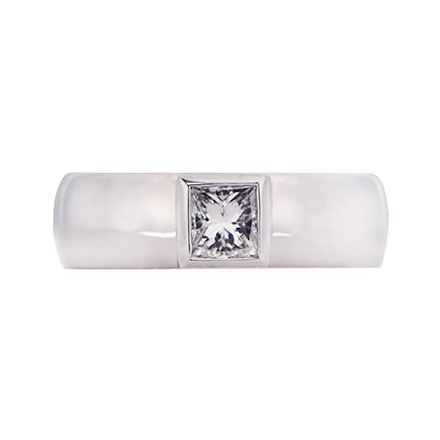A Look at Mounting Styles
 To mount a diamond is to connect it to a ring. Some types are designed to allow as much light to flow through the jewel as possible. Other diamond rings concentrate on keeping the gemstone safe, and still more are decorative as well as practical. Depending on the mount, the diamond may sit above the band or be placed within.
To mount a diamond is to connect it to a ring. Some types are designed to allow as much light to flow through the jewel as possible. Other diamond rings concentrate on keeping the gemstone safe, and still more are decorative as well as practical. Depending on the mount, the diamond may sit above the band or be placed within.
Common diamond engagement ring settings include prong types, which use wires to grip the edges of the jewel. Variations play with the number of prongs as well as the size, making some thinner and others smaller. Pave mounts have burrs carved from the shank to secure tiny, closely set diamonds. Bezel settings wrap a strip of metal around the jewel. Most of the time, these mounts hold diamonds on the band.
Other settings place the stone so its top is level with the band’s surface. These are known as flush mounts. They’re achieved by carving a hole into the shank and placing a diamond inside. The artisan presses the edges of the hole over the girdle, finishing the arrangement. Depending on the design and ring width, several gems can be flush set into a diamond wedding band.
Channel settings are akin to flush mounts as both hold diamonds in the ring. The former is designed to keep multiple diamonds in place. Instead of a hole, a groove is cut into the band and the diamonds go in side by side. For a consistent appearance, only diamonds of the same cut, color and size are channel set. This look is used for both side stones and the main design.





